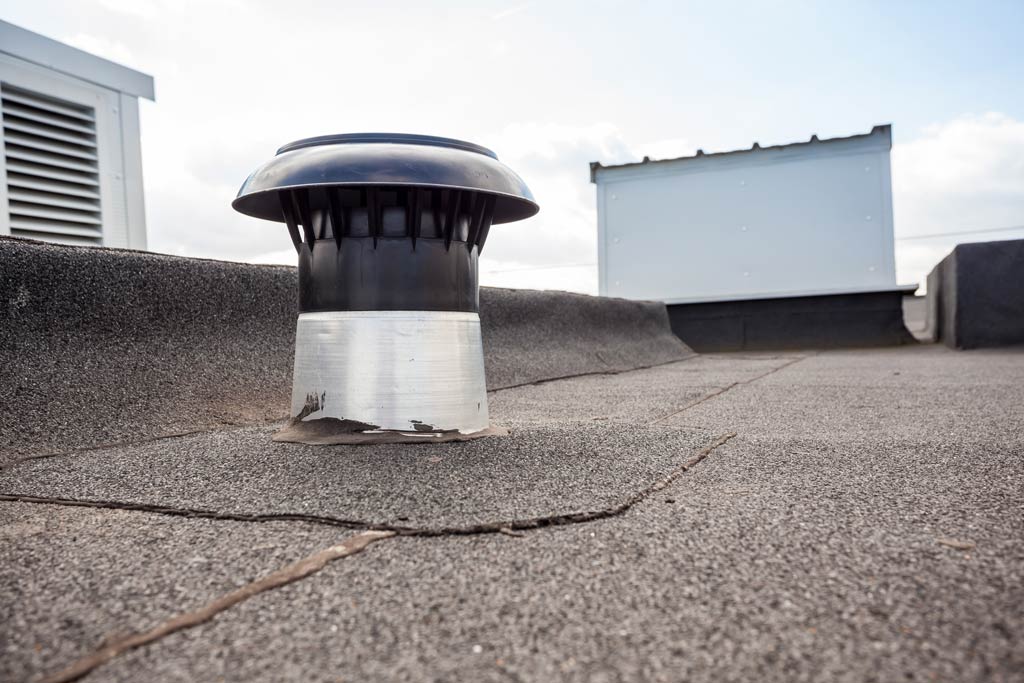Roof ventilation is essential for maintaining a healthy and efficient home. Proper roof ventilation keeps your attic space cool, extends the life of your roofing materials, and can even lower your energy bills. Let’s explore the five best roof ventilation types that ensure your home stays comfortable all year round.
1. Ridge Vent Systems
What Are Ridge Vents?
Ridge vents are installed along the roof’s ridge lines. They are a popular roof ventilation option because they allow warm air from the attic to escape, promoting airflow.
How Do They Work?
Ridge vents rely on natural convection to pull air through the attic. Cool air enters the attic through intake vents, usually located at the roof’s edge, and pushes the hot air out through the ridge vent. This vent system is effective in maintaining a balanced airflow.
Benefits of Ridge Vents
- Efficient Airflow: Provides continuous ventilation along the entire roof line.
- Aesthetic: Blends seamlessly with asphalt shingle roofs and other roofing materials.
- Durability: Requires minimal maintenance once installed.
2. Roof Turbines
What Are Roof Turbines?
Roof turbines, also known as whirlybirds, are a type of vent that relies on wind to pull air out of the attic. These vents are usually placed near the roof’s peak.
How Do They Work?
When the wind blows, it spins the turbine, creating a suction that pulls air from the attic. This process helps to expel hot air and moisture.
Benefits of Roof Turbines
- Wind-Powered: Efficiently uses wind energy to ventilate the attic.
- Cost-Effective: Low initial cost and low maintenance.
- Visible Indicator: Easy to see if they are working by observing the spinning turbine.
3. Soffit Vents
What Are Soffit Vents?
Soffit vents are installed under the eaves of the roof. They allow cool air to enter the attic, which is essential for a balanced ventilation system.
How Do They Work?
These vents work in conjunction with exhaust vents (like ridge vents) by allowing cool air to enter the attic. The cool air pushes the hot air out through the exhaust vents.
Benefits of Soffit Vents
- Effective Cooling: Ensures a steady flow of cool air into the attic.
- Prevents Moisture: Helps to keep the attic dry, preventing mold and mildew.
- Unobtrusive: Typically hidden under the eaves, maintaining the roof’s aesthetic.

4. Louver Vents
What Are Louver Vents?
Louver vents, or gable vents, are installed on the exterior walls of the attic space. They come in various shapes and sizes, including rectangular and triangular forms.
How Do They Work?
Louver vents allow air to enter and exit the attic from the sides, promoting cross ventilation. This system helps to expel hot air and circulate cool air throughout the attic.
Benefits of Louver Vents
- Cross Ventilation: Promotes effective airflow across the attic.
- Versatile: Can be used in conjunction with other vent systems.
- Aesthetic Variety: Available in different designs to match your home’s exterior.
5. Powered Attic Vents
What Are Powered Attic Vents?
Powered attic vents, or attic fans, use electricity to pull air out of the attic. They can be installed on the roof or gable and are often thermostat-controlled.
How Do They Work?
These vents use a motor to pull hot air out of the attic and bring in cool air. Some models are solar-powered, reducing electricity costs.
Benefits of Powered Attic Vents
- Controlled Ventilation: Can be set to operate at specific temperatures.
- High Efficiency: Quickly removes hot air, especially during peak summer months.
- Energy-Saving Options: Solar-powered models reduce reliance on electricity.
Choosing the Best Ventilation System for Your Home
When selecting the best roof ventilation system, consider your home’s specific needs and climate. Proper roof ventilation is crucial for the longevity of your roofing materials and the comfort of your living space.
Factors to Consider
- Roof Line and Design: The shape and slope of your roof can affect ventilation efficiency.
- Attic Space and Insulation: Adequate insulation and aired in the attic space contribute to effective ventilation.
- Local Climate: Hotter climates may benefit more from powered vents, while areas with consistent wind might find roof turbines more effective.
The Bottom Line
Proper roof ventilation is not just about comfort; it’s about protecting your home’s structure and extending the life of your roof. By understanding the different types of roof vents and how they work, you can make an informed decision on the best roof ventilation methods for your home. Whether you choose ridge vents, roof turbines, soffit vents, louver vents, or powered attic vents, each option offers unique benefits that can enhance your home’s ventilation and overall efficiency.

